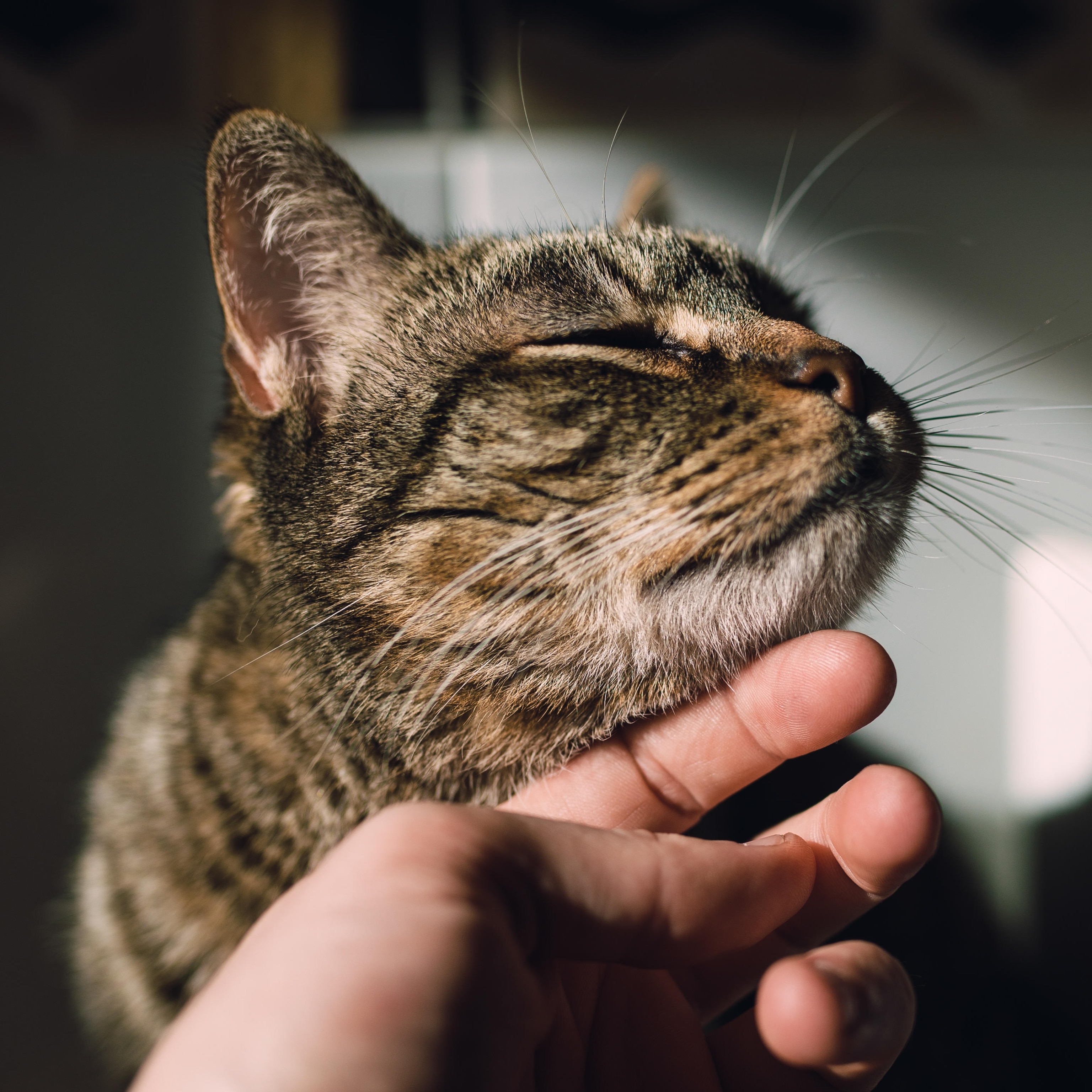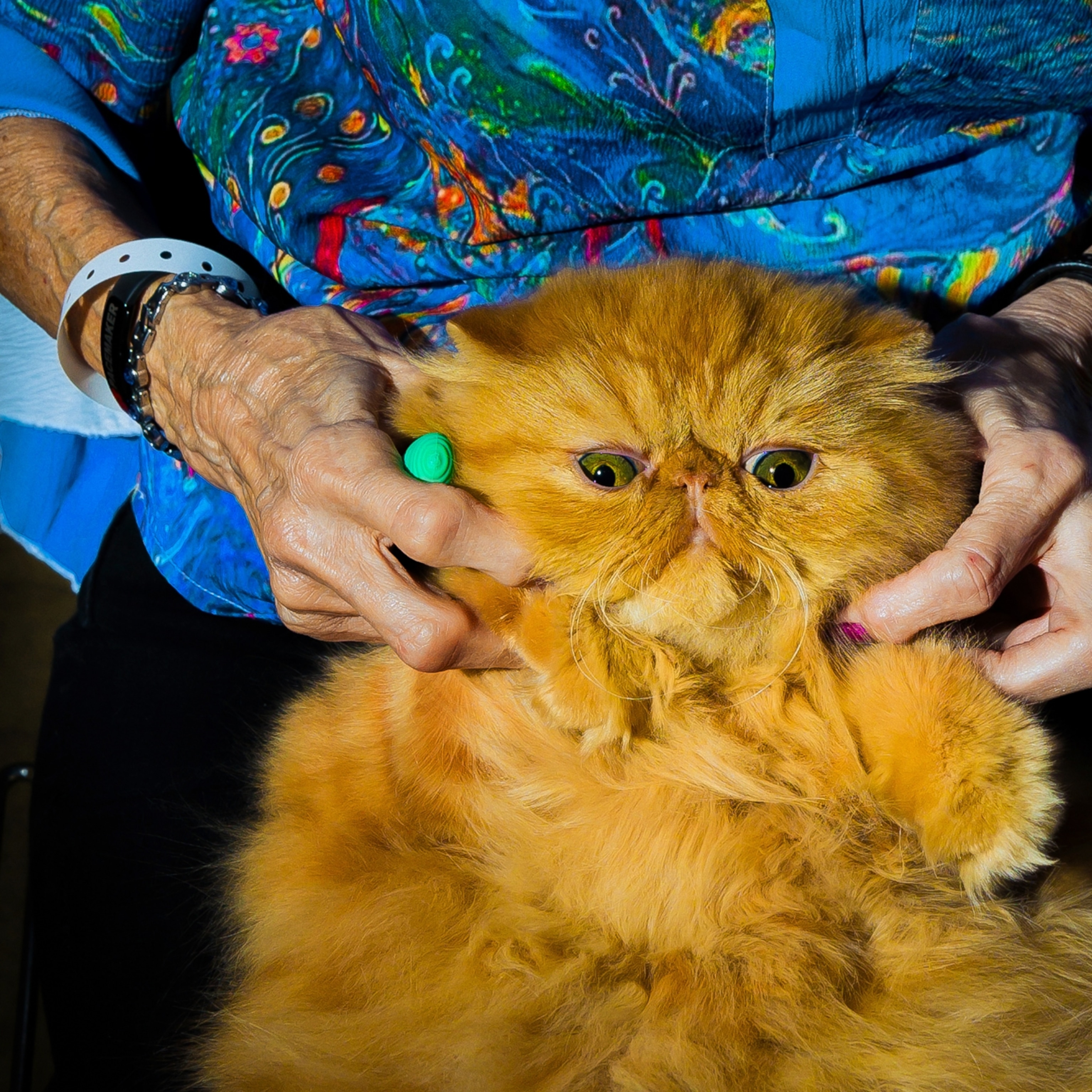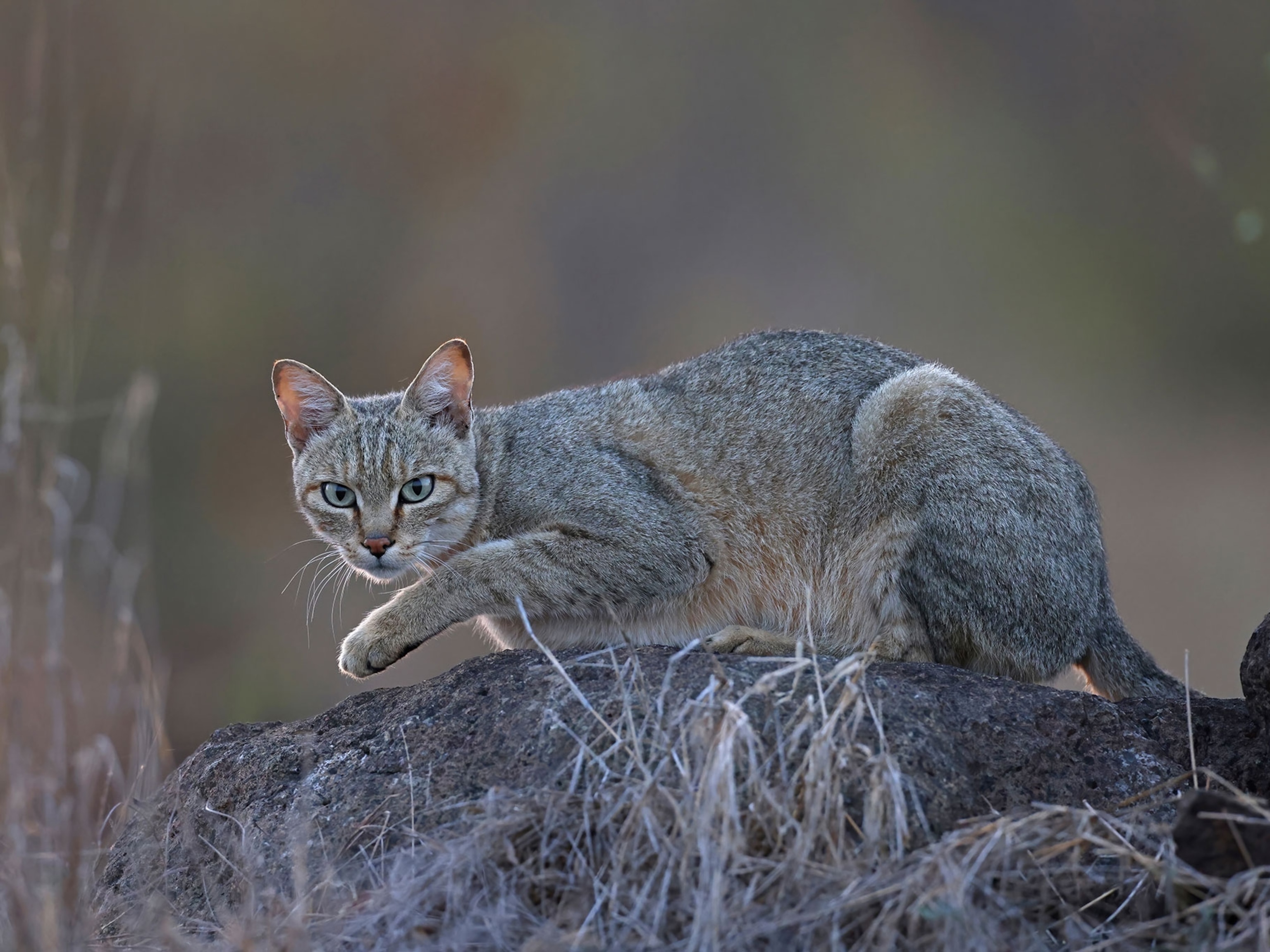
Does Petting Really Stress Out Your Cat?
Anthrozoologist John Bradshaw discusses keeping pet cats happy.
Could petting your cat really stress the animal out? Headlines started appearing last week about a study that supposedly showed just that. But much to the relief of cat owners who thought they would have to keep their paws off their precious felines, one of the study authors quickly issued a release climbing down from such a conclusion.
Stating that the study had been misinterpreted, Rupert Palme of the University of Veterinary Medicine in Vienna, Austria, assured cat owners that they "can carry on stroking their four-legged friends without worry."
We spoke to John Bradshaw, the foundational director of the Anthrozoology Institute at the U.K.'s University of Bristol and author of the new book Cat Sense, about the real stress worries for pet cats and the other hot-button cat issues of the day.
Let's start with the stress study. Do we stress out our cats by petting them?
The study has been very widely misreported, which is a shame really since it is a very interesting study. But the wrong aspects of it have been picked up on. First of all, I talked to Daniel Mills [of the U.K.'s University of Lincoln], who was the senior researcher on this. I don't think what they have found can in anyway be interpreted as stroking cats, any type of cats, makes them stressed. I think it could be true in some cats, but that's not to say this study showed that.
I think what they have shown is that there are some kinds of cats that are very anxious about something, and you pick that up from the stress hormones they are excreting as well as the fact that they are very nervous when they are being stroked. They aren't stressed because they are being stroked; they are stressed because something in their lives is making them very twitchy and very apt to overreact to things. But [the researchers] weren't able to pinpoint what that was.
What sort of things should cat owners keep an eye out for when it comes to stressed-out cats?
Stress in the animal comes through in poor health. There are two things that particularly show up. One is skin problems, so the cat is either losing some fur or grooming too much in one particular place so that they have a bare patch on their skin or even an ulcer. The second one is cystitis [a urinary tract infection], which is actually quite common in cats.
The general signs of stress in cats are not actually that easy to identify because they are just not very demonstrative animals. They tend to hide their feelings when they are feeling unhappy. Having said that, a cat that spends a lot of time hiding, under the furniture or up very high in the room, on top of closets and that sort of thing—that is often a sign of stress. The cat is having to get itself in a good, defensive position all the time before it can feel comfortable.
Can cats live happily in a house with other cats?
Yes, they can, but it's not as easy to achieve a happy coexistence between cats as it is with dogs. Most dogs will like to meet other dogs, and they will quite quickly work out a relationship between them. They've got the body language, the signals to do that. The problem with cats is that they don't have the same sophisticated signaling system that dogs do.
But there are some things you can do to make sure two cats do get along. The first thing is it's a good idea to pick cats that have already lived together, and the best solution is often two cats from the same litter. Cats who have not lived together since they were young, you need to do a kind of careful introduction. The best way to do that is to mimic how the two cats would probably find out about each other, which is by their smells.
Can cats be content living indoors?
Cats, in my view anyways, do not need an awful lot of physical space to live in. What they need is a basic, secure place to live in that is interesting. The owner of an indoor cat needs to pay more attention to the cat, take more trouble to make the cat's life interesting.
With an ordinary alley cat, most people in the U.K. do still let them outdoors, but we're not a nation of apartment dwellers—we like our houses. I've got colleagues who have done studies on indoor cats in places like Switzerland and France where apartment dwelling is much more common, and there don't seem to be major problems associated with it. You don't suddenly see a certain kind of psychological disorder in cats that are kept indoors—particularly if that's all they've known.
There's also pressure from conservationists to keep cats indoors. (See "Hello Kitty! Please Don't Kill Me!")
If you look at these reports [about wildlife killed by cats] carefully, the conclusion tends to be that the damage is done by feral cats, where there is damage. That's not to say that cats don't kill birds and mammals—they do—but the real question from a conservation standpoint ought to be if this is having any lasting effect.
Going back to your average cat owner who is feeling guilty about a few birds that come in, I think that's been slightly overdone. Rather than feel guilty about having a cat, if you are in a typical suburban area and there isn't any particularly rare wildlife around, do something for the birds. Get some bird feeders [and] put them up in areas where the cats can't get them. That way you are kind of balancing out any kind of effect your cat might have.
Why have cats maintained so much of their wild behavior?
The idea that they have been domesticated for so long is really a little bit overstated.
Your average cat, you know who the mother was because you went to get the kitten from somewhere. But you probably won't know who the father is because female cats go out and select their own mates. Essentially, that is the mating behavior of a wild animal, not a domesticated animal at all, because they are selecting who they mate with. Cats are not really domesticated in the sense that most dogs are. Most dogs have some sort of pedigree in their background, whereas most cats don't.
Declawing has become a controversial practice in America. What's your take on it? Should it be banned, or should it be an option for cats with behavior problems? (See "New Documentary Condemns Declawing of Cats.")
Now when you say "behavior problems," what people mean is that they don't like their soft furnishings scratched or their drapes, and that to me is not a behavior problem. That's the owner's problem. It is indeed an emotive issue. And in the European Union, including the U.K., it's illegal. It's cast as a mutilation, that you are essentially mutilating the animal's body for human benefit, not for the animal's.
I think that clawing behavior is a natural part of cat behavior. They need to have an outlet for it. Again, training can help a great deal, but the idea that you can have a cat without claws, I would honestly say to someone like that, are you sure you really want a cat? Or do you just want something fluffy you can stroke? In which case, go get yourself a soft toy or two.
This interview has been edited and condensed.
Follow Katia Andreassi on Twitter.








